The corridor. Who lives in Javakheti, Georgia's southern land
Who lives in Javakheti? Everything is different in Javakheti – the landscape, the climate, the people, the architecture. In every visit I try to understand what is the main essence, what is the secret of Javakheti.

Javakheti is distinguished by everything, be it the landscape, climate, people or architecture.
Back in the 70s, it was just a dead-end, a border of the Soviet Union, where people needed passes to travel. Many people left Javakheti then. Today though, this region has become a corridor, an intersection where three countries meet. Major projects are implemented in this region and some of the big countries’ interests lie here.
Javakheti is predominantly populated by ethnic Armenians. Georgian Muslims and eco-migrants from the Ajara region were forced to settle down here in the 80s and 90s.
Earlier, in the 1940s, the Muslim Meskhetians were herded into freight trains and deported from here overnight by Stalin’s order. There are also a couple of villages, populated by the Doukhobors – Slavs who have already become local exotics.
What’s the reason for such a frequent change in the region’s human landscape? Does the secret of Javakheti’s uniqueness lie in that very change?
The land of big lakes
Located at an altitude of 1,800 – 2,100 metres above sea level, Javakheti is the coldest place in Georgia, with the temperature dropping down to 40 degrees C below zero in winter.
But the locals are accustomed to snow and sub-zero spells. There are practically no forests in the region. Therefore, people use dung fuel (cube-shaped, dry animal faeces) to heat their houses in winter.
However, spring brings changes to this cold and snowy region. The alpine flowers start blossoming on the meadows, and hundreds of birds flock together here as Javakheti is a major bird migration corridor in Georgia.
Paravani, Saghamo, Khanchali, Tabatskuri Madatapa, Bughdasheni – ‘the land of big lakes’, that’s how Samtskhe-Javakheti is referred to. Some of them are deep, others are shallow, some are cold, others are warm, but they are a real paradise for the waterfowl. Therefore, most of them choose Javakheti. Some come here to build their nests, while others use it as a stop-over while migrating.
The Doukhobors

It was late autumn of 1835, when the people travelling on foot and carts first appeared in the vicinity of Ninotsminda – the Doukhobors, or spirit-wrestlers, as they call themselves.
Javakheti was actually an uninhabited area after the Russian-Turkish war. The Russian Emperor decided to exile the Doukhobors, who were regarded as ‘rebellious’ (they didn’t recognize the Protestant Orthodox Church and refused to serve in the army) and ‘disgraced’ people, to Javakheti region.
It was an ideal decision. Nikolay (Kolya) Sukhourukov, an elderly Doukhobor and one of the few who reside in Javakheti nowadays, says it was a perfect solution:
“Some of us are Romani, and others are Germans, Poles, Mordovians, Tatars, Kazakhs, Ukrainians and Finns. We are a mixed-blood people. However, the nationality isn’t that important, since we are God’s sons and daughters.
“For example, if you are thirsty and someone gives you water, are you going to inquire about the origin of this water? A conscientious person will just say thanks and drink the water.
“When I decided to get married, we went to our parents and told them: ‘We both love each other, our word is law.’ Only love makes the family strong and tightly-knit. The nationality doesn’t matter. My wife is of different nationality.
“Our forefathers communicated directly with God, who dwells in each person’s heart and soul. We’ve never recognized any mediators between humans and God. For a certain period of time our world outlook harmoniously coexisted with Christianity. But then we were subjected to persecution and exiled allegedly because we didn’t go to church.”

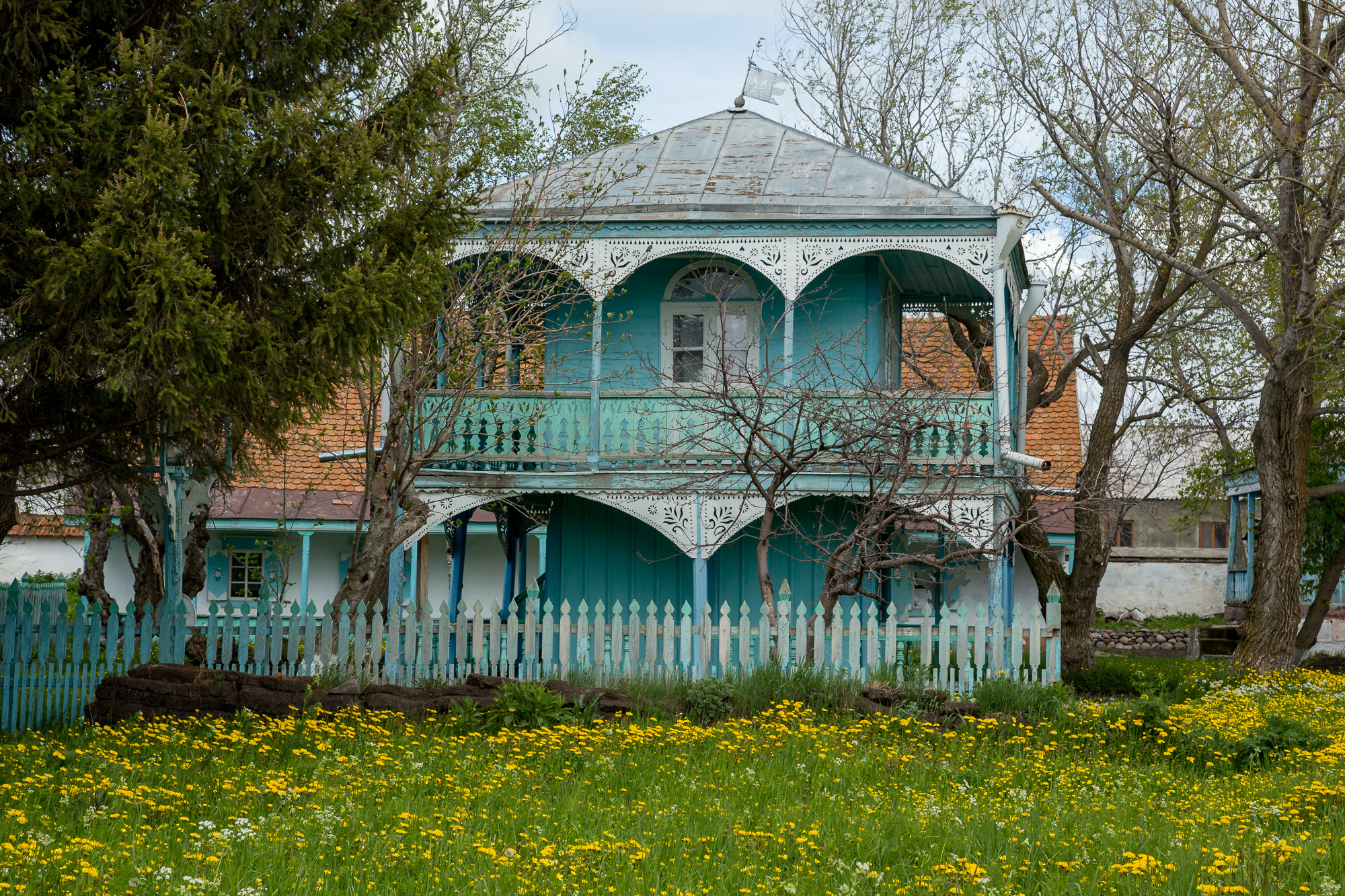

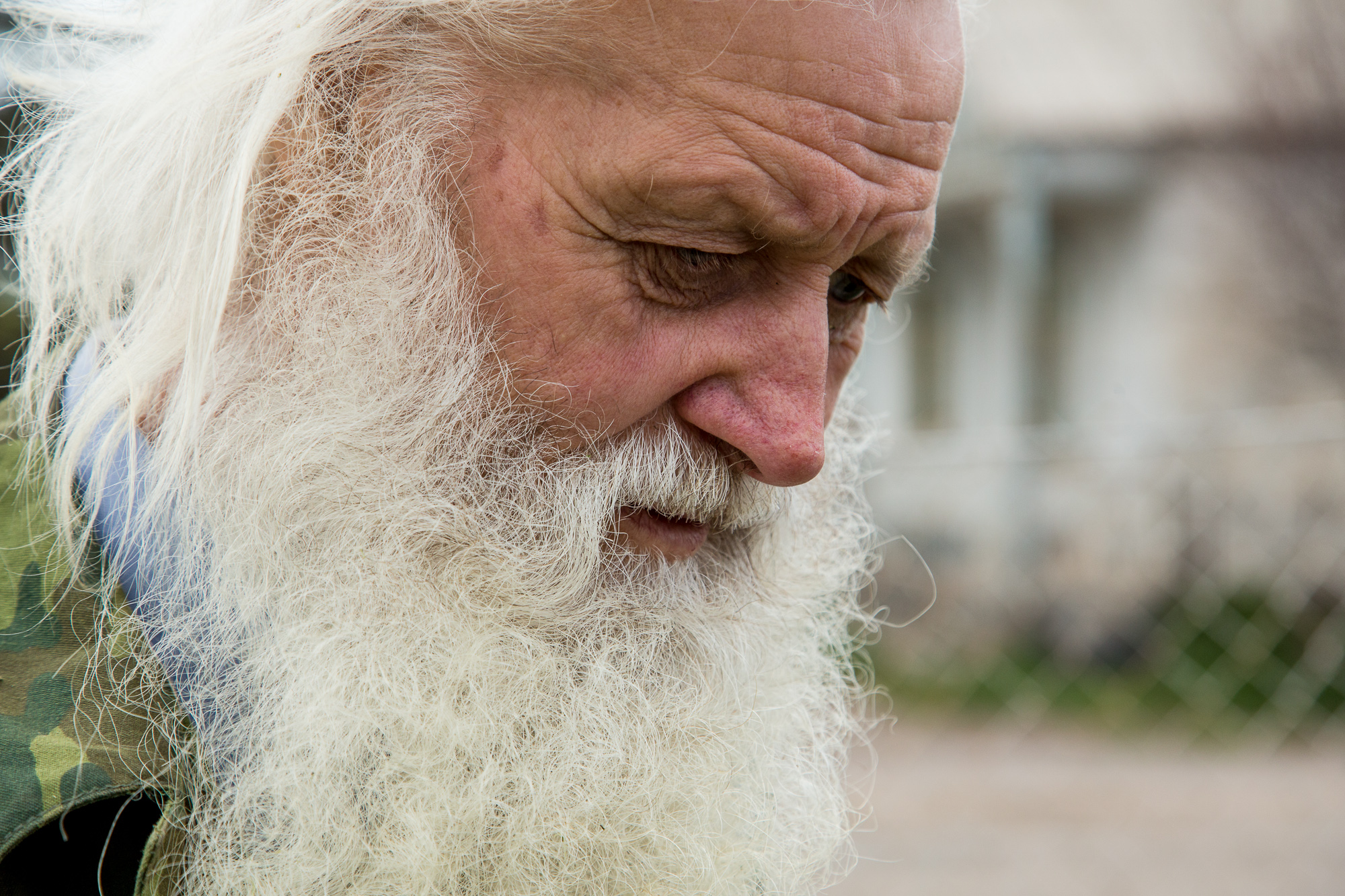
The industrious and diligent Doukhobors gradually gained a foothold in Javakheti. They settled down in Gorelovka, Spasovka, Efremovka and other villages. Later on, they turned into Slavic settlements, with lovely little houses, neat and tidy streets and people dressed in traditional, embroidered garments. The aforesaid added more diversity to the Javakheti region.
According to the 2014 population census data, Samtskhe-Javakheti’s population had reduced to 47,094 people, compared to 2002. Gorelovka, Spasovka, Orlovka, Efremovka, Troitska, Tambovka and Radionovka are seven villages that were earlier populated by the Doukhobors, but are almost abandoned now.
Nikolay Sukhorukov, a native of Gorelovka village, says that most of his fellow villagers left the area in search of a better life.
The Doukhobors were mostly engaged in livestock breeding. The alpine zone is distinguished by its unique pastures, allowing a perfect-quality cheese to be produced. Today, in Javakheti, you will frequently hear people saying that they miss the Doukhobor cheese.
Eco-migrants

Other people live in the areas now which were formerly inhabited by the Doukhobors. They claim they ended up here by a fluke of fate and nature.
They are the eco-migrants from a landslide and flood-affected Ajara and some other southern regions of Georgia, whose houses were destroyed as a result of a natural disaster.
They’ve gotten used to the harsh natural conditions of the Javakheti region. Yet, they are facing certain problems: the houses they live in haven’t been registered under their names, they don’t have enough grazing land for their livestock etc.
Each family here has been allotted just a two hectare land plot, whereas the hay gathered here is hardly enough for feeding two heads of livestock, especially as winter here lasts for seven months. Some eco-migrants are employed at the local farms, but they are underpaid.
“The only thing we demand is that the houses we live in be titled to us and the land be allotted. We just want to have ‘a roof over our heads’. If something happens, where should we go then? We can’t live as displaced people all our lives. We don’t have any land, so, how are we supposed to feed our livestock then?” said Omar Shavadze, an eco-migrant who moved to Gorelovka from Adigeni village.

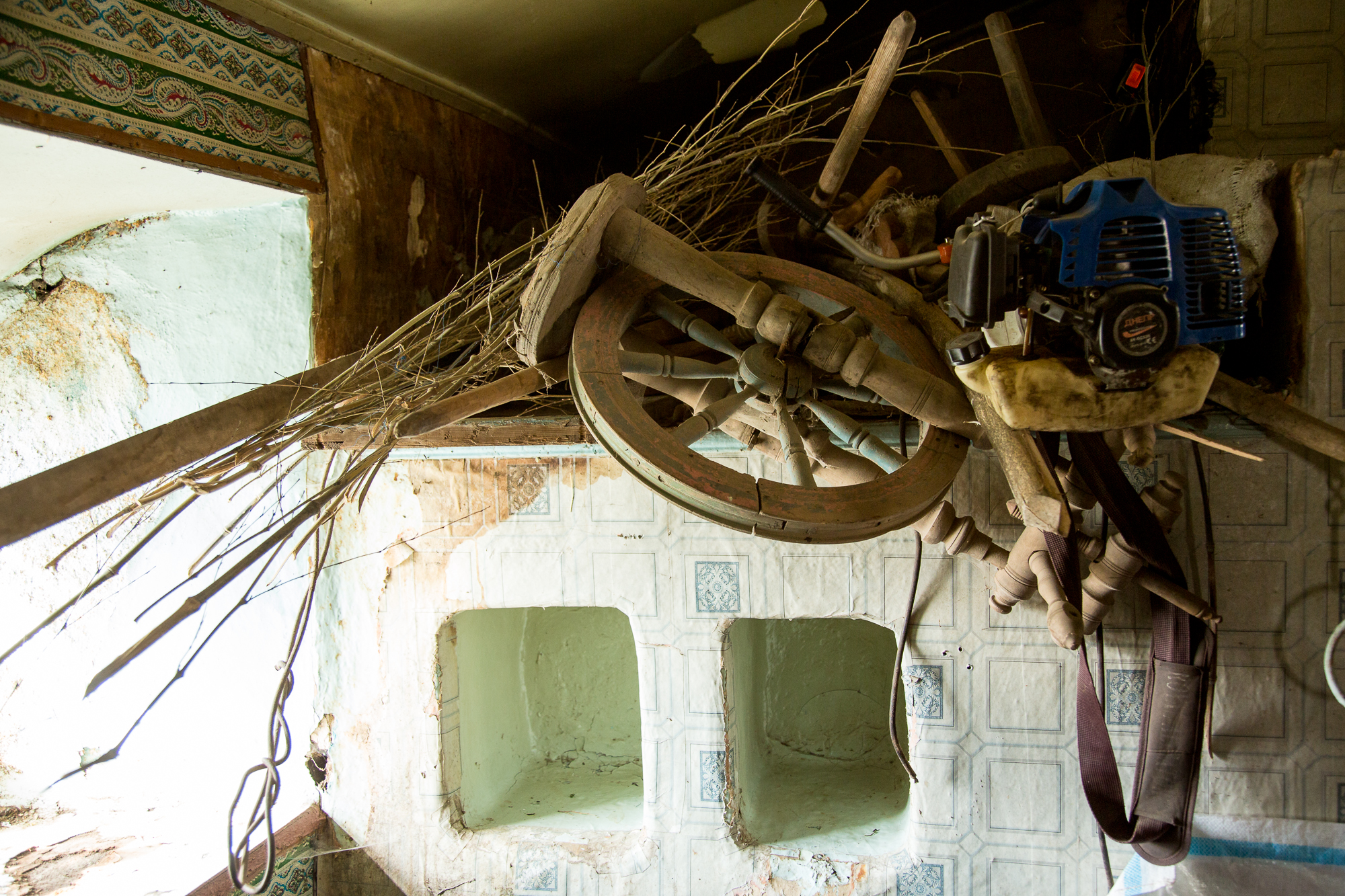

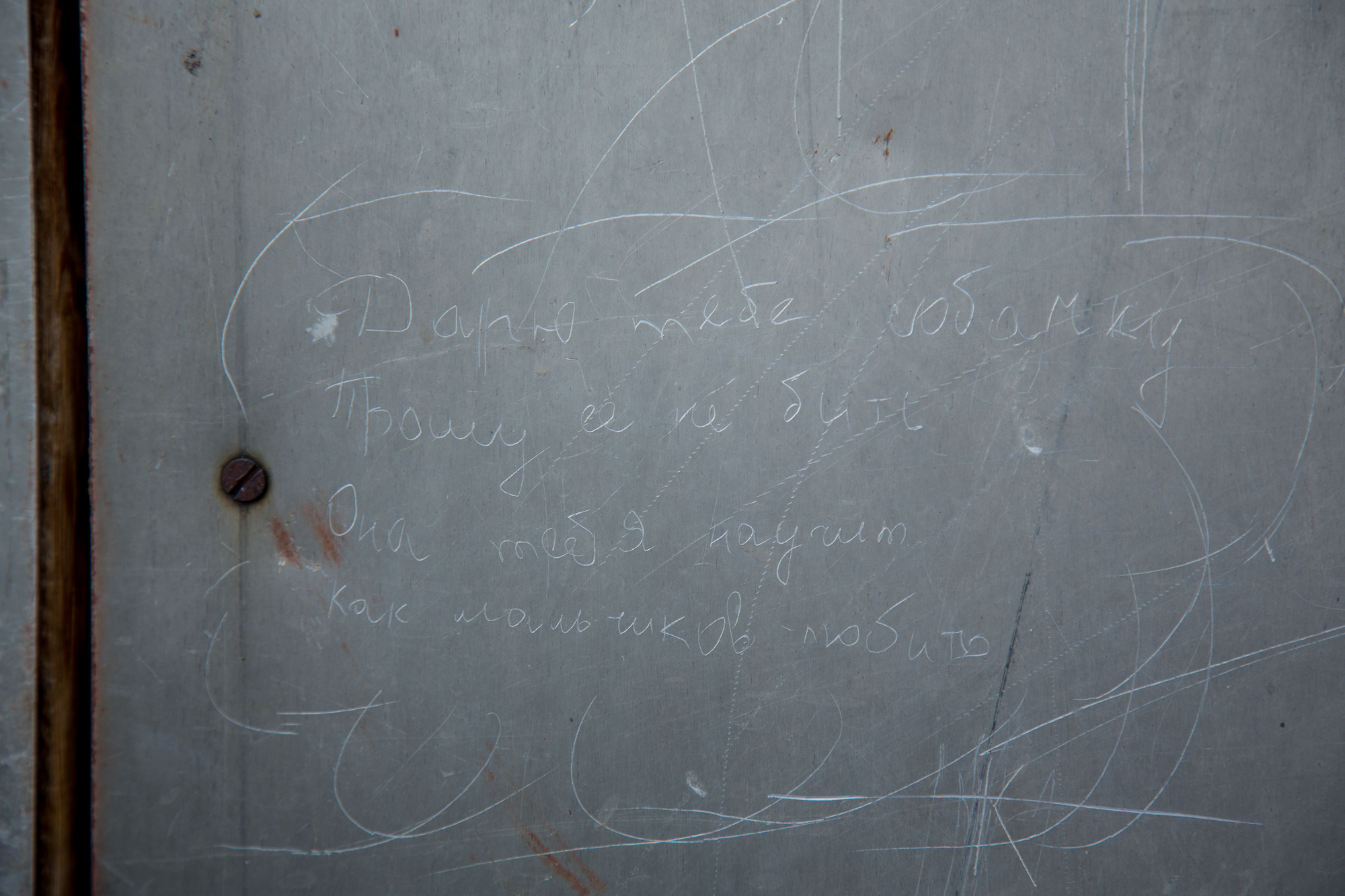
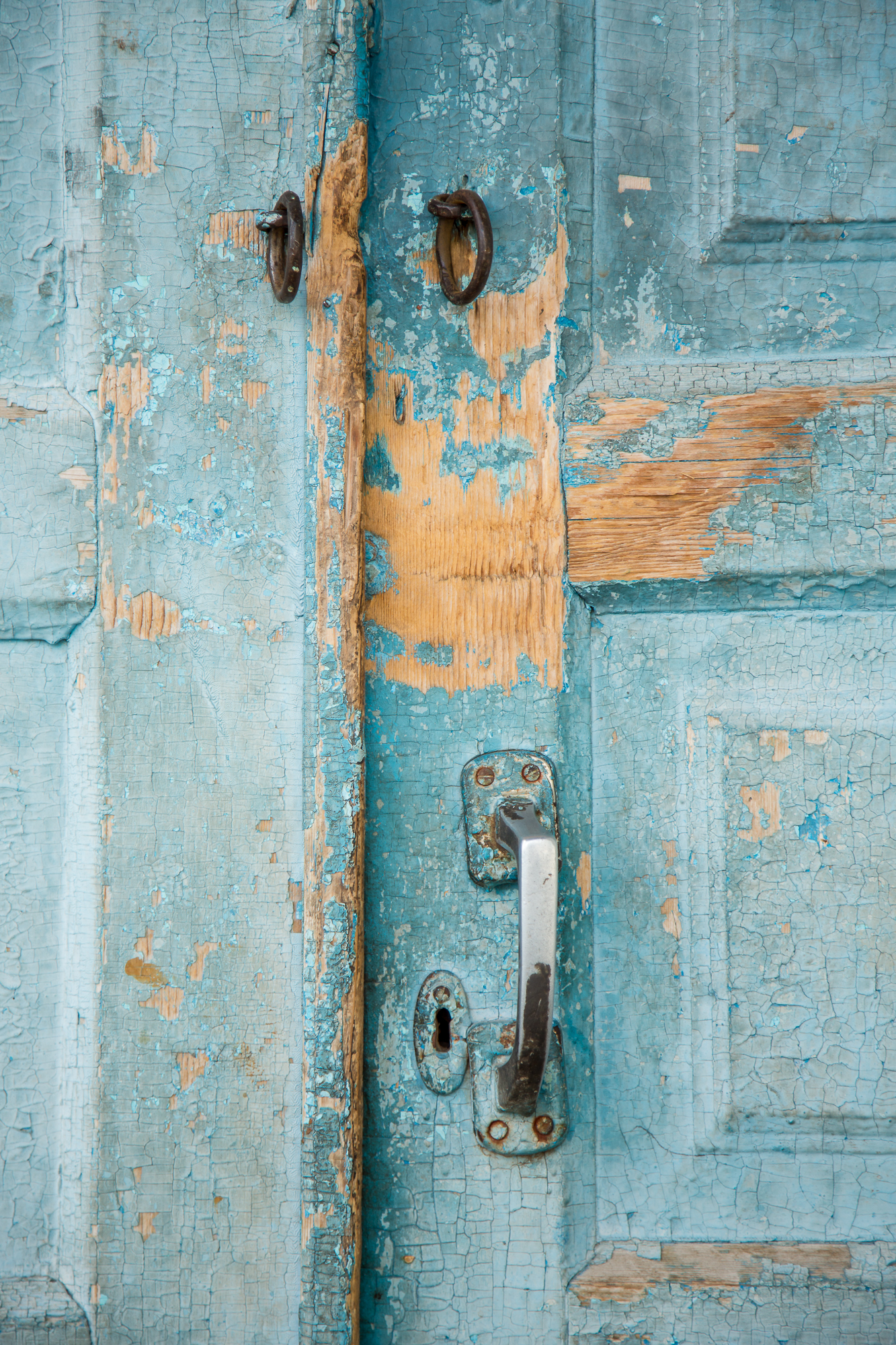
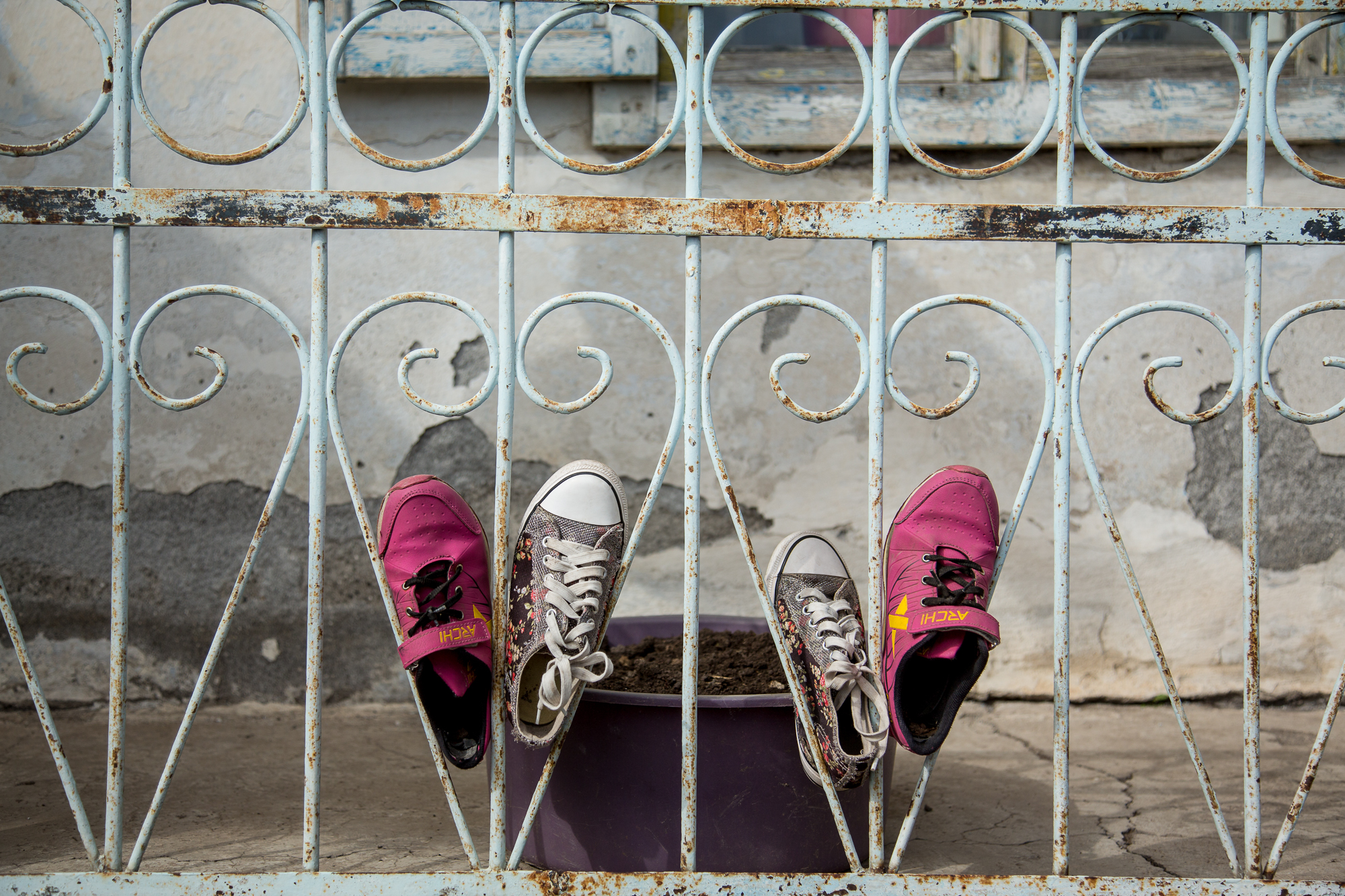
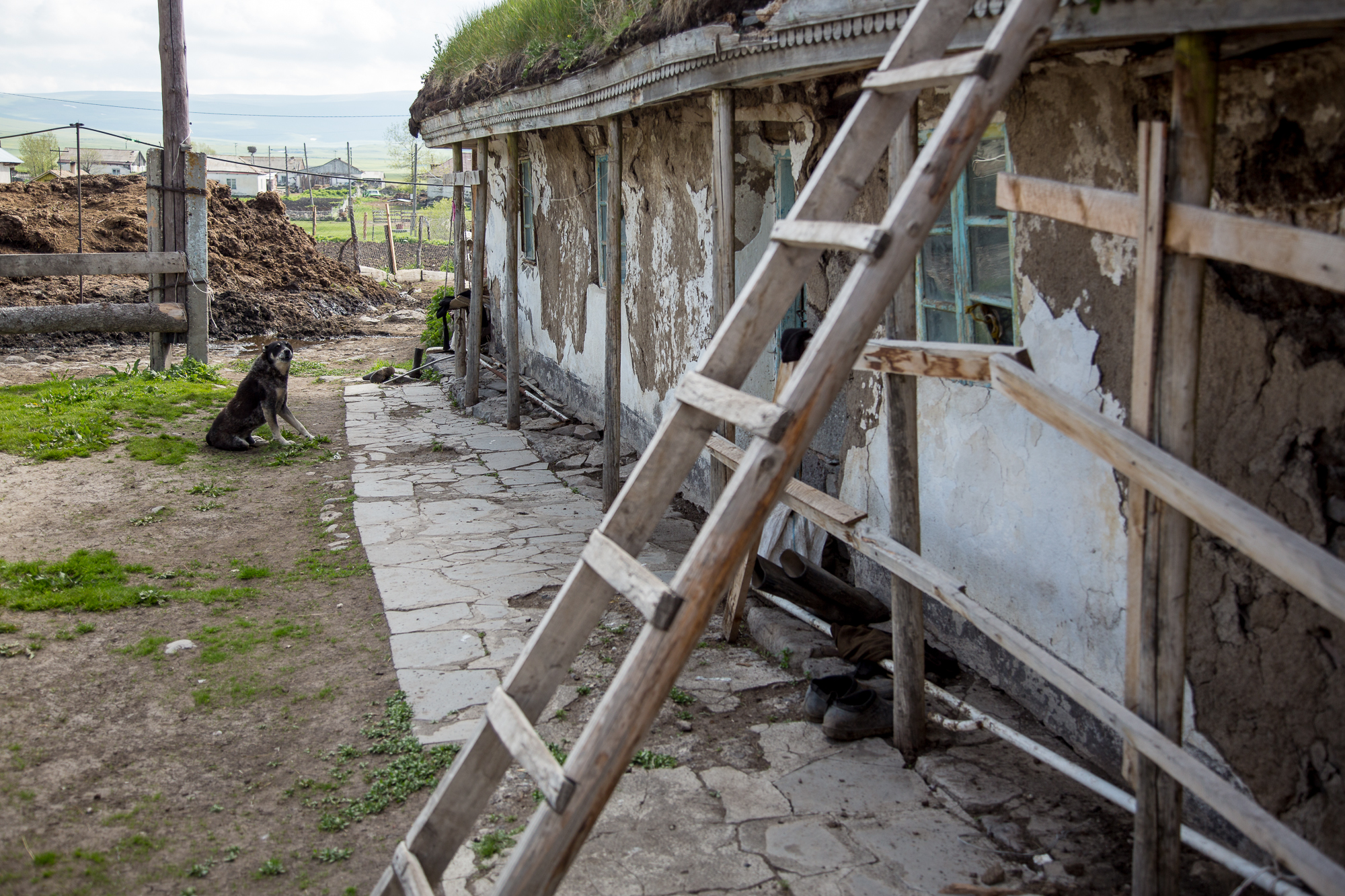
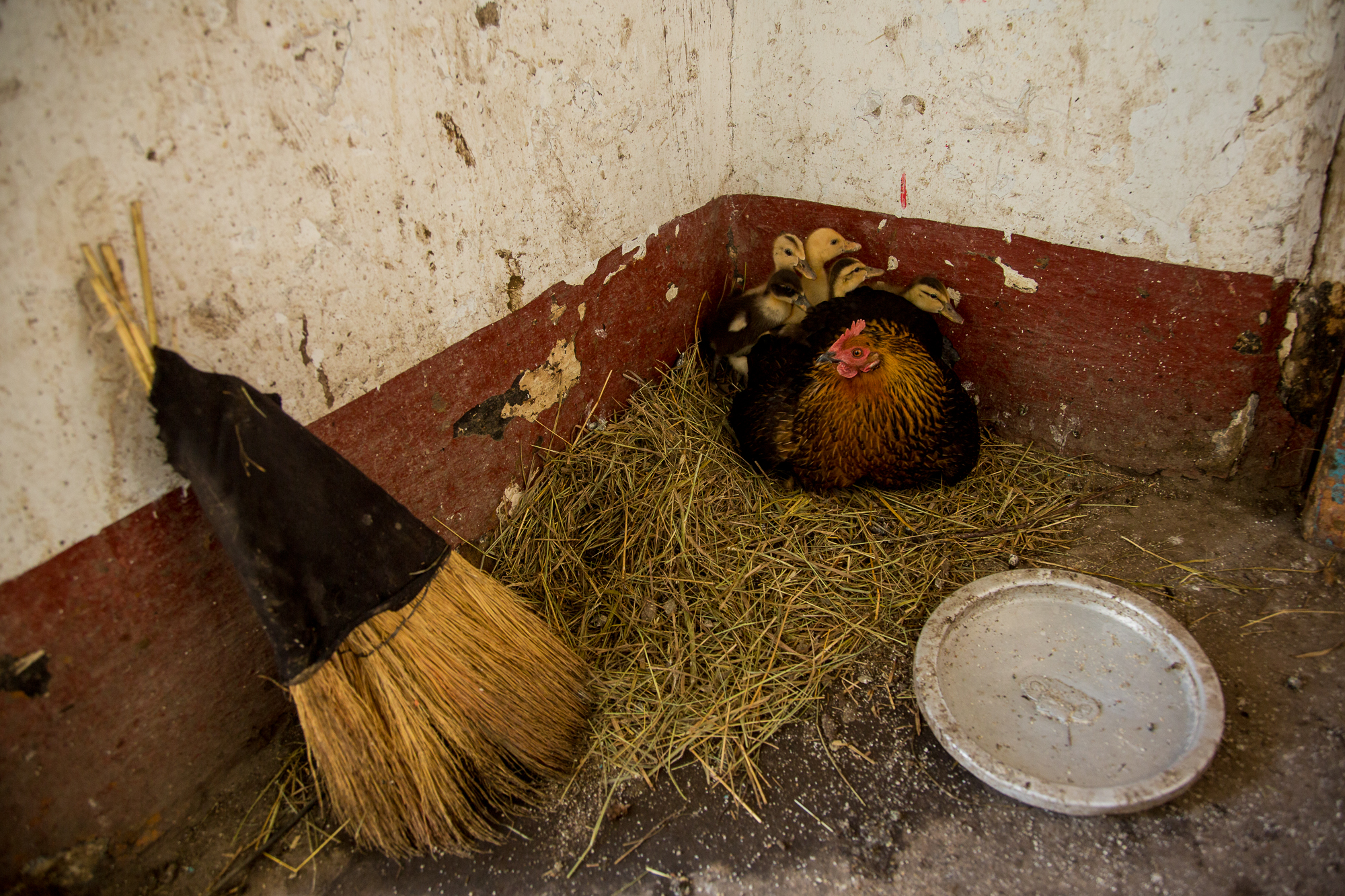
Omar’s story: “I am a native of Adigeni village. My house was ruined as a result of a landslide in 2011, so I came and settled down here. The government helped me and I was allotted this house. At first there were five of us in the family, but my daughter got married. We keep cows, sell milk and thus earn our living. That’s how we live.
“Nobody stays here for long. The Georgians also settled down here in the 80s and 90s, but many of them have gone. It’s so cold here in winter, that many simply can’t stand it. We were raised in Javakheti, so we are accustomed to it, but I can’t live without land here.
“There are dozens of businessmen who lease the land. They claim ownership of that land, so we can’t use it. We travelled to the regional centre (Ninotsminda), as well as to the governorate (Tbilisi), and met with the government officials there, but that didn’t work out. We were told that we should buy that land. I don’t have any money, so how am I supposed to buy it? It’s a pity, because this place is really very nice and suitable for living, especially for those who are fond of cattle breeding.”
Today, there are about 90 Georgian families in Gorelovka village. Most of them have been displaced from the Adigeni and Khulo villages which were affected by the natural disaster.
The Georgian Muslims who settled down in Gorelovka have arranged a makeshift mosque there. They bought a house, repaired it and invited a mullah.
“We would like to stay here, but it would be almost impossible without land. Personally I am not fit for going to Turkey for work. It was a good time when the railway was being constructed here. Although we were not employed in the construction work, we were hired as guards there.”
Seasonal migrants
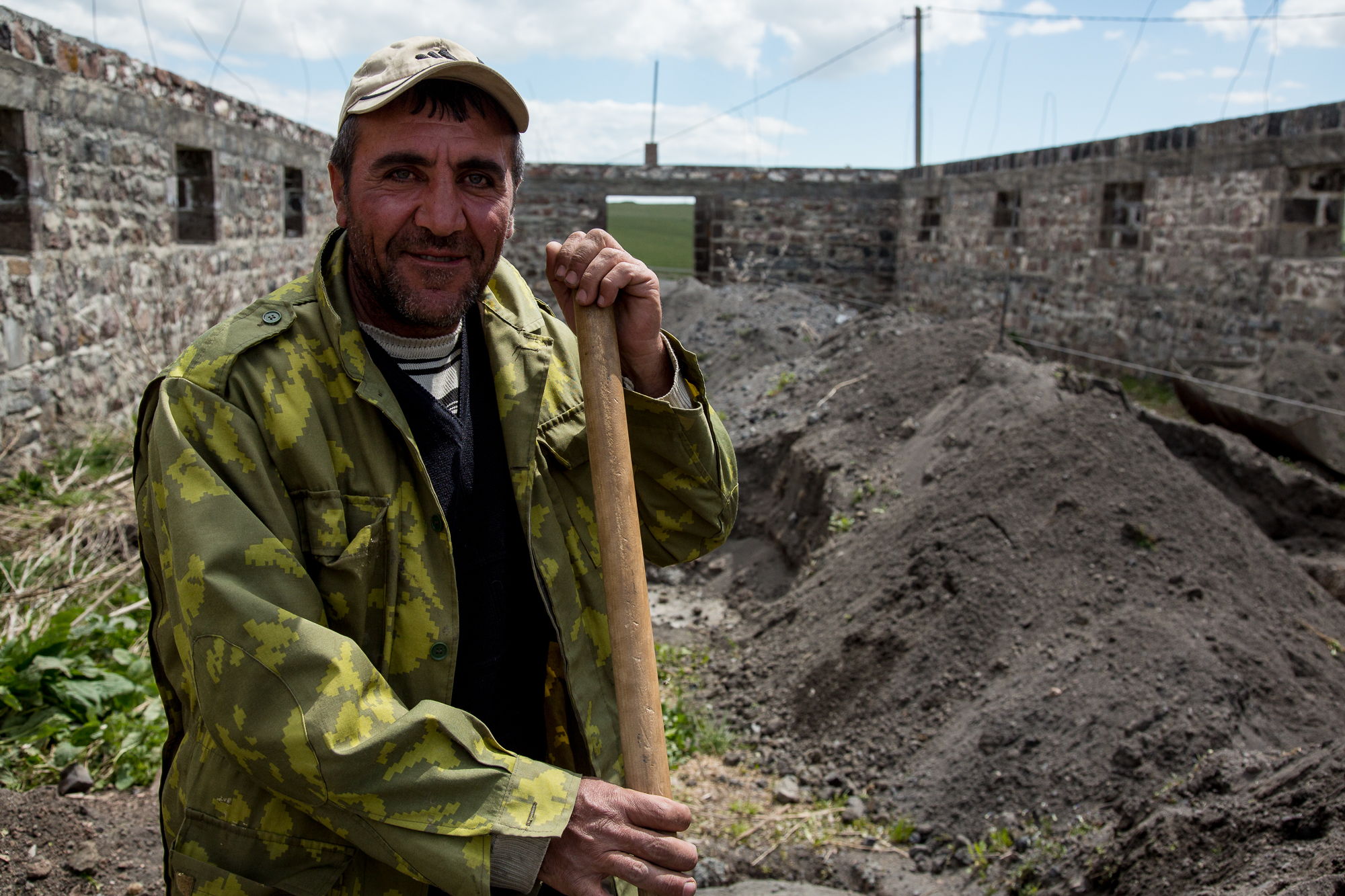
In each and every Armenian family here, at least one family member leaves for Russia in search of seasonal or permanent work. They are mostly men who go there in summer. They work at construction sites, build roads and then live on those earnings in the winter periods.
“I have no complaints. I am employed in construction work, I have 10 heads of livestock and I sell milk. I have a wife and two daughters. The only bad thing is that I still don’t have a son, and I wish I had one because it’s essential,” said Hanzel from Ninotsminda.
“I haven’t been anywhere for 10 years already. I used to go to Russia, to Krasnodar province, for work. I was employed in construction there for six months a year. I have a lot of friends in Russia, as I spent at least five years there.
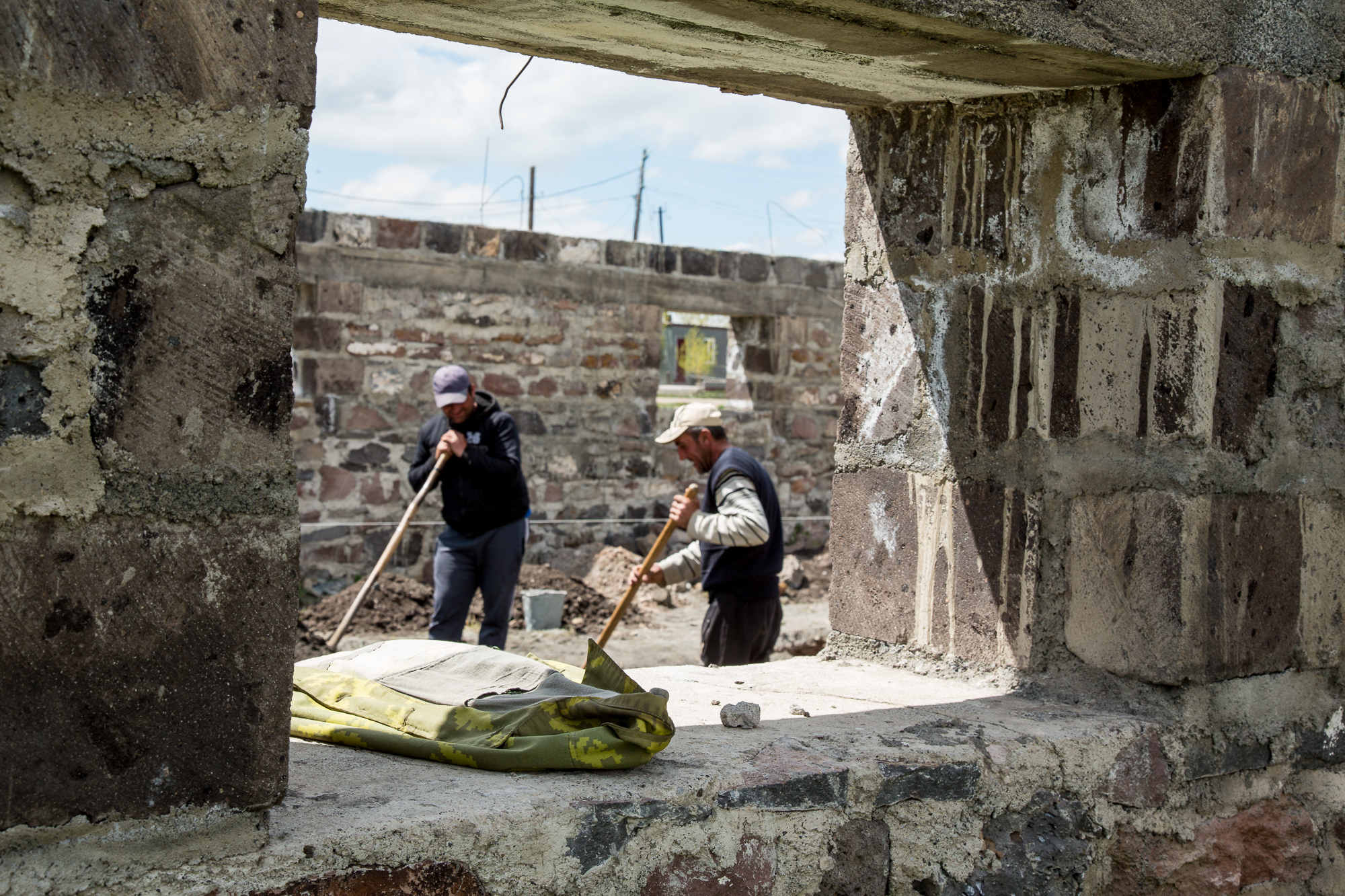
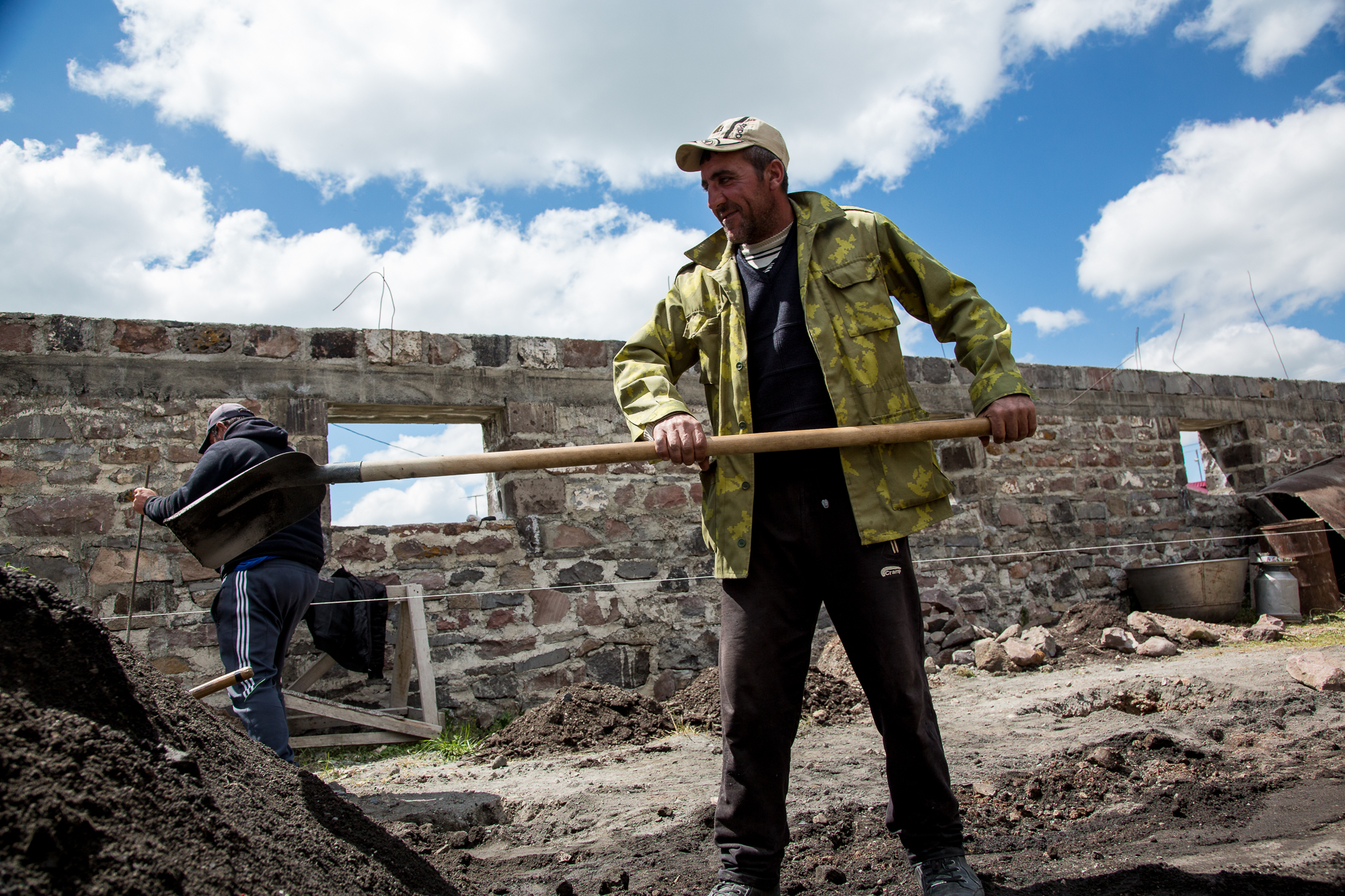
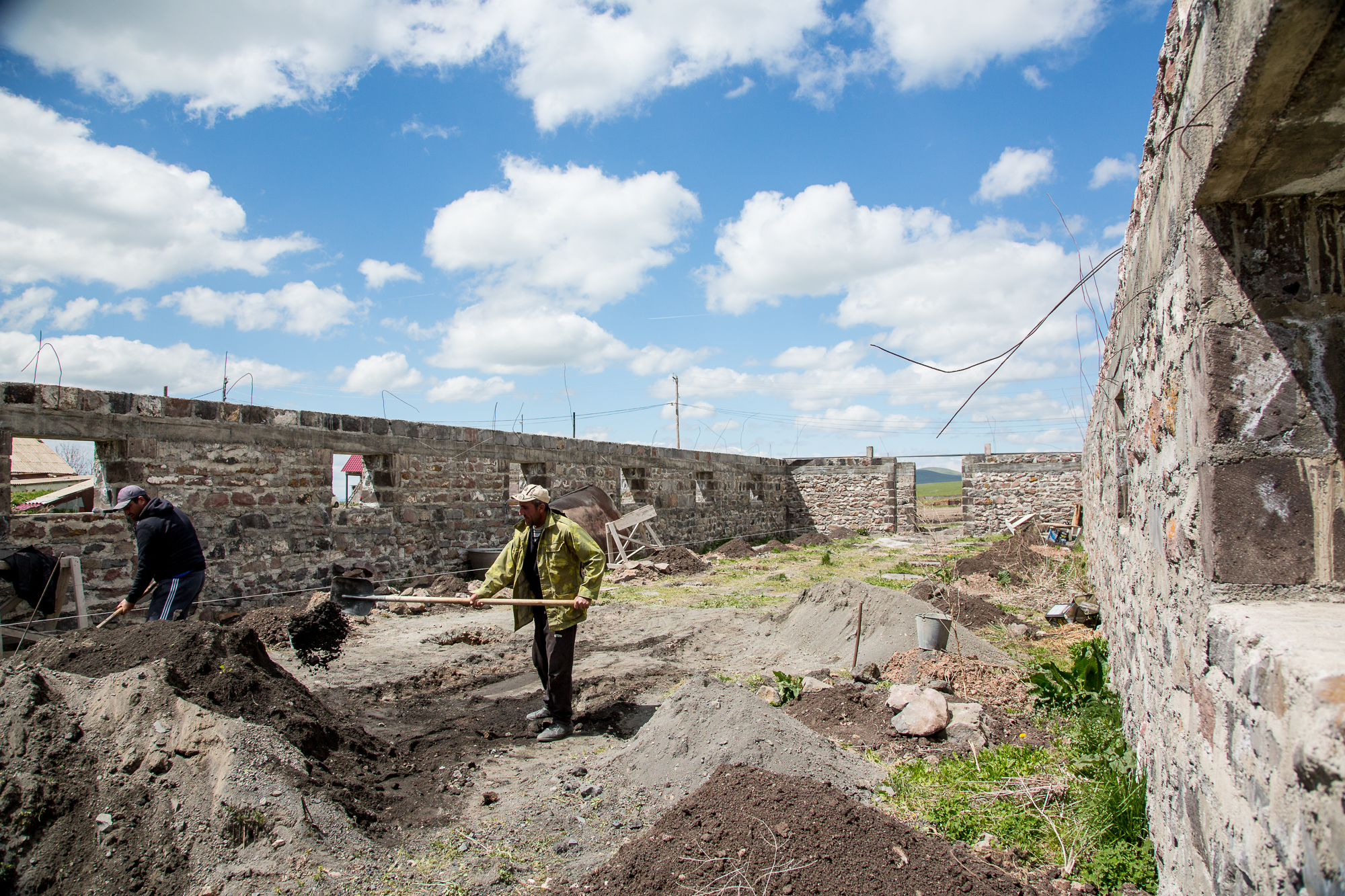
“Although there are more job opportunities, it’s hard to live there, far away from your family, without a home-cooked meal.
“About 20 men from our village work in Russia nowadays, whereas earlier, nearly half of the villagers travelled to Russia for work. It no longer makes sense, since the value of the currency has depreciated. You exchange the sum you’ve earned and their is almost nothing left of it, whereas in the past, you lived on those earnings throughout the winter. I was born here. My father was a driver at the collective farm. It was a good time. My family didn’t lack anything.
My daughters are school students. They aren’t going to get married yet, since they want to continue their studies. They are fluent in Georgian. One of them won second place in a Math Olympiad. So, they will support me in future. They will be better than I am, since they will be well-educated. After school they attend Georgian language classes, so as not to have any problem finding a good job in future.
“My elder daughter wants to study and work in Tbilisi. I’m going to rent an apartment for her and she will move to Tbilisi. When we worked in Russia, we jointly rented an apartment. But sometimes we didn’t have any apartment, we didn’t have anything. So, we had to sleep on wooden boards, 6-7 men all together. So, it’s much better to live in the family. I hope my daughters would never live in the same conditions as I lived.”
Birds

One of the major bird migration corridors passes through the plateau in Javakheti. Thousands of birds, flying northward in spring and southward in autumn, cross this plateau. The local shallow lakes, which are rich in edible plankton and fish, form the perfect place for the recreation and recuperation of waterfowl.
Migration is a lengthy and labour-consuming travel that requires plenty of energy. Therefore, the birds start preparing for it in summer, they gain weight and are ready to set out for a trip in autumn. Some of them fly in the daytime (e.g. storks, predators), and others at night (ducks and some Passeriformes).
The birds don’t stay here in winter, as it’s usually too cold here. The lakes freeze up and the food is unreachable.
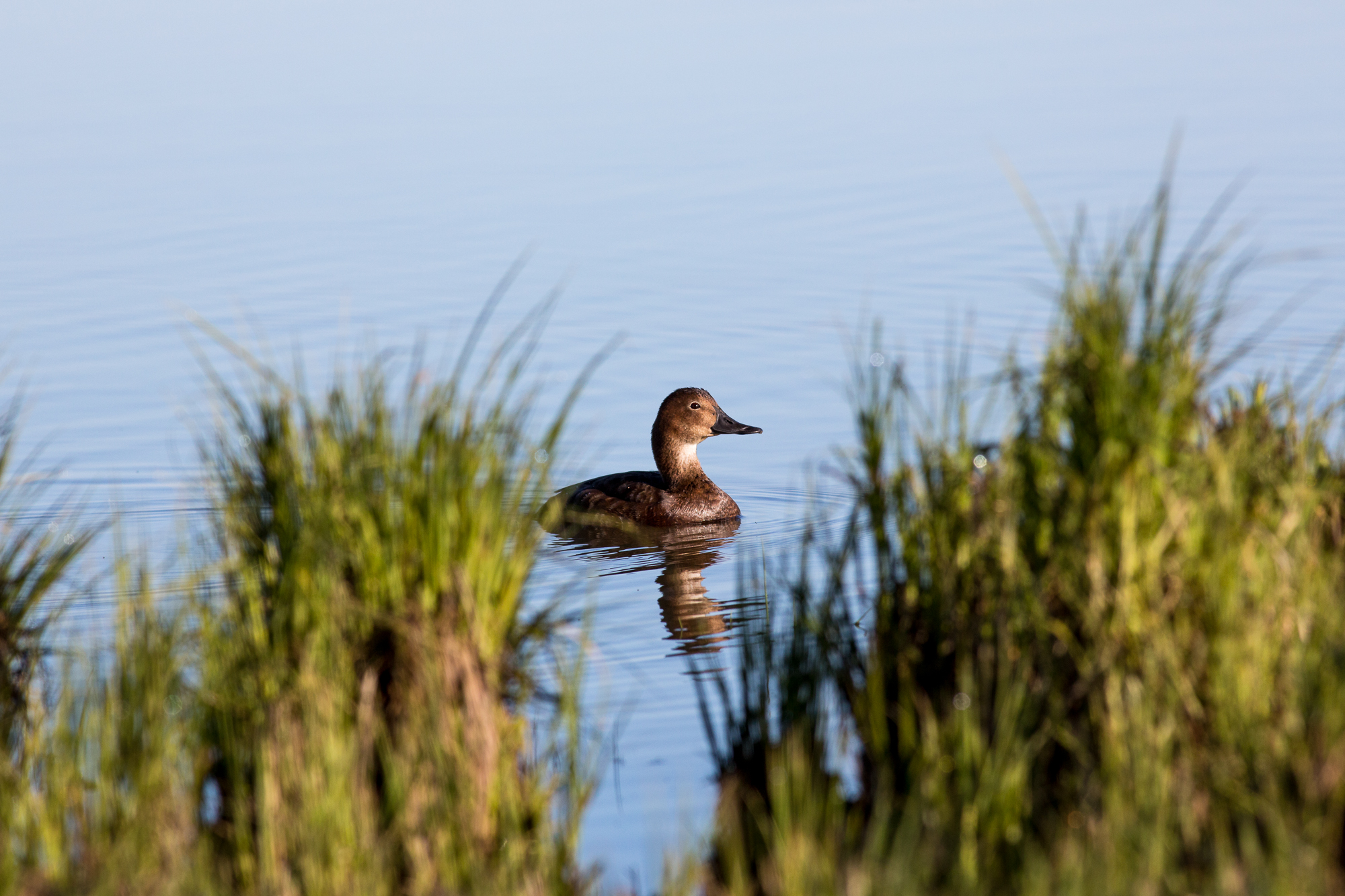
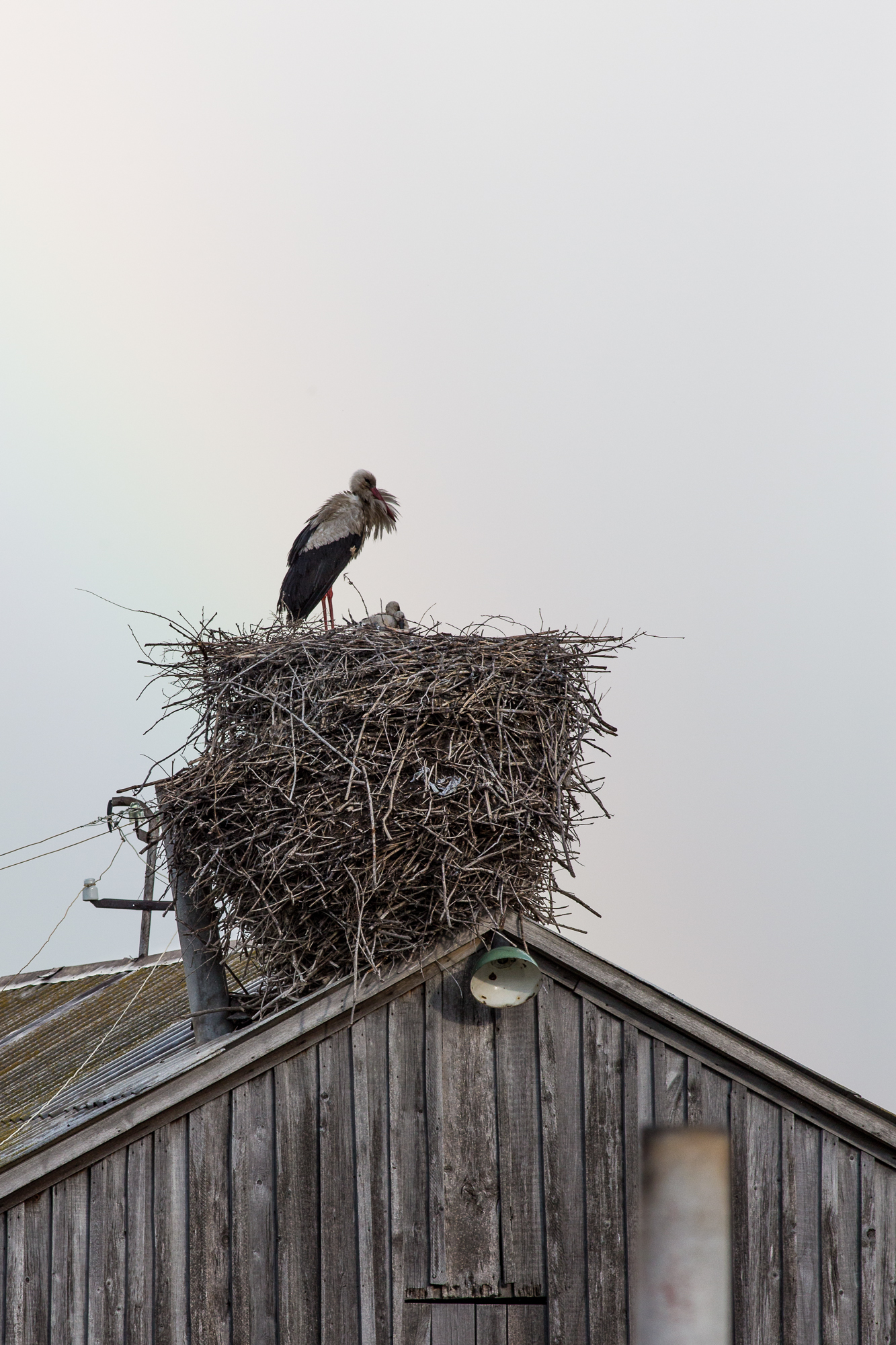
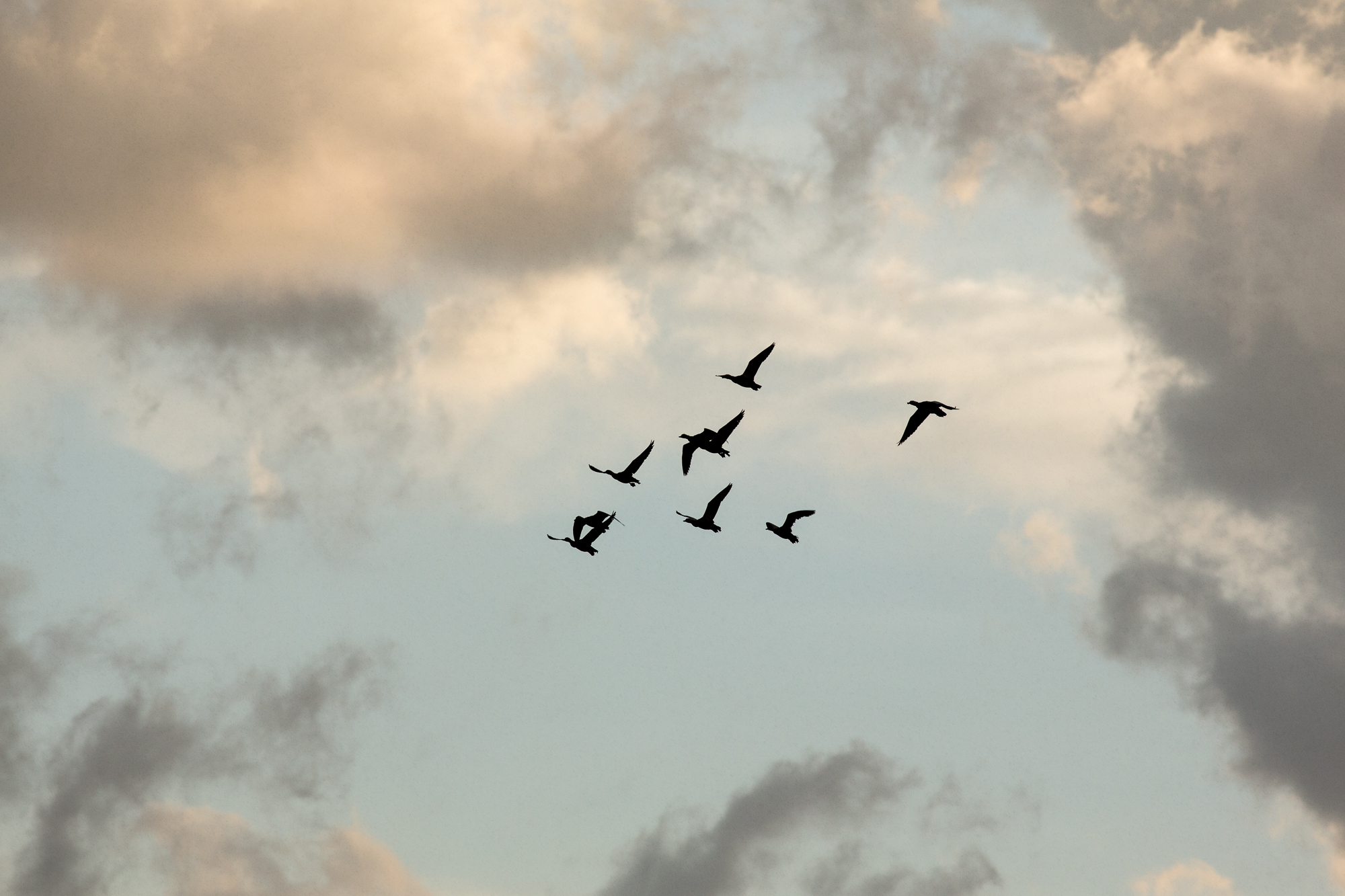

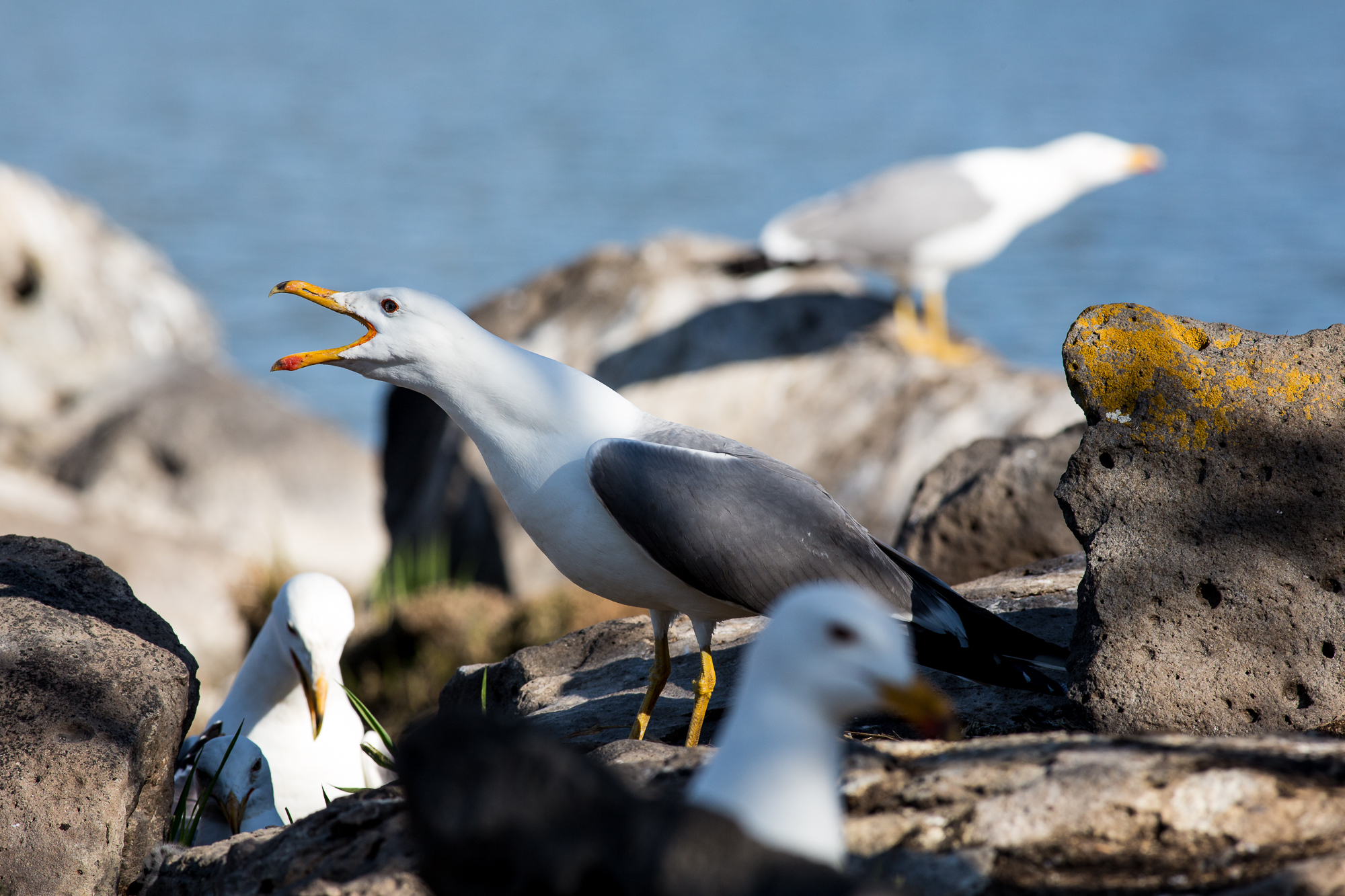
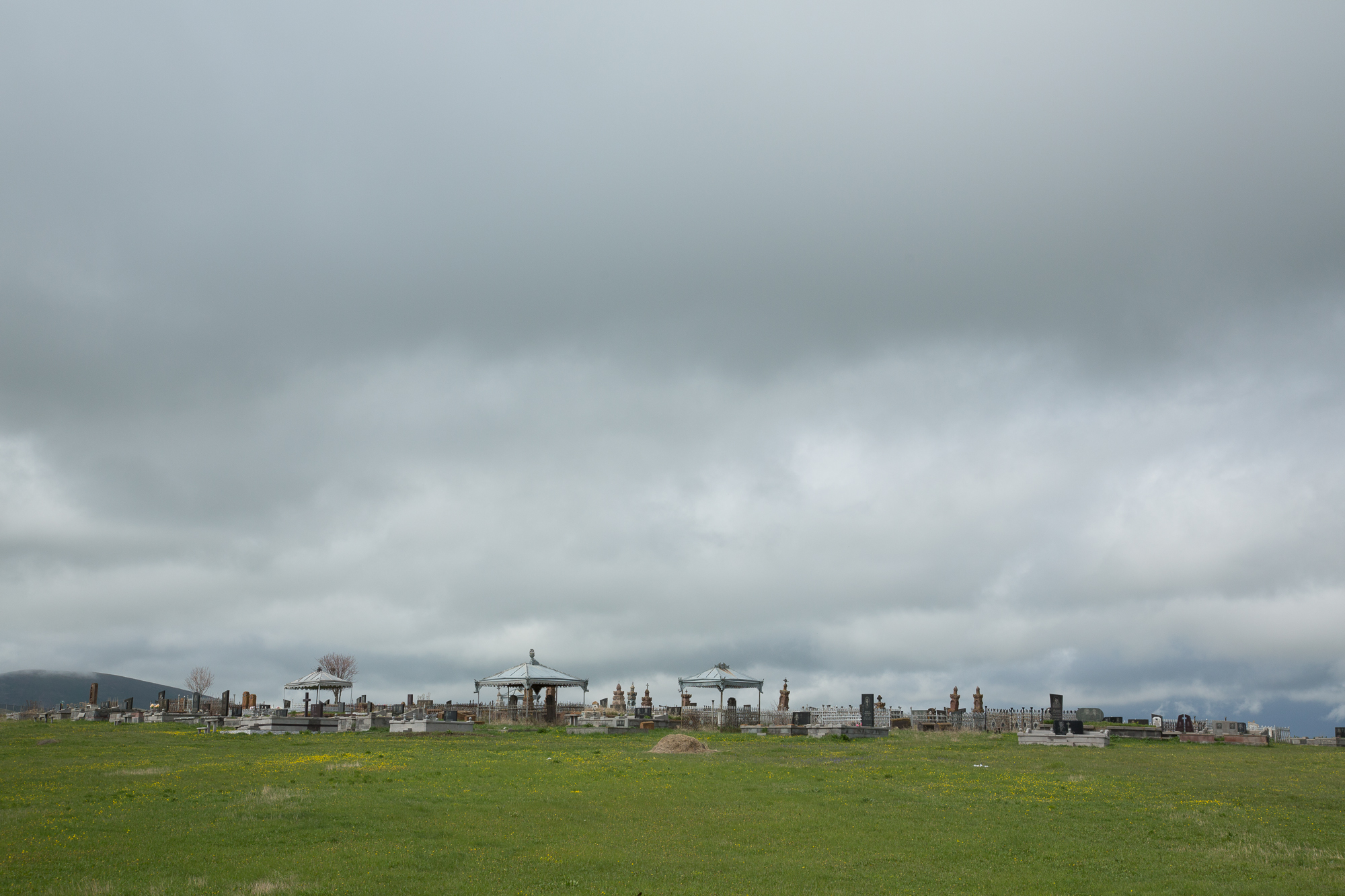
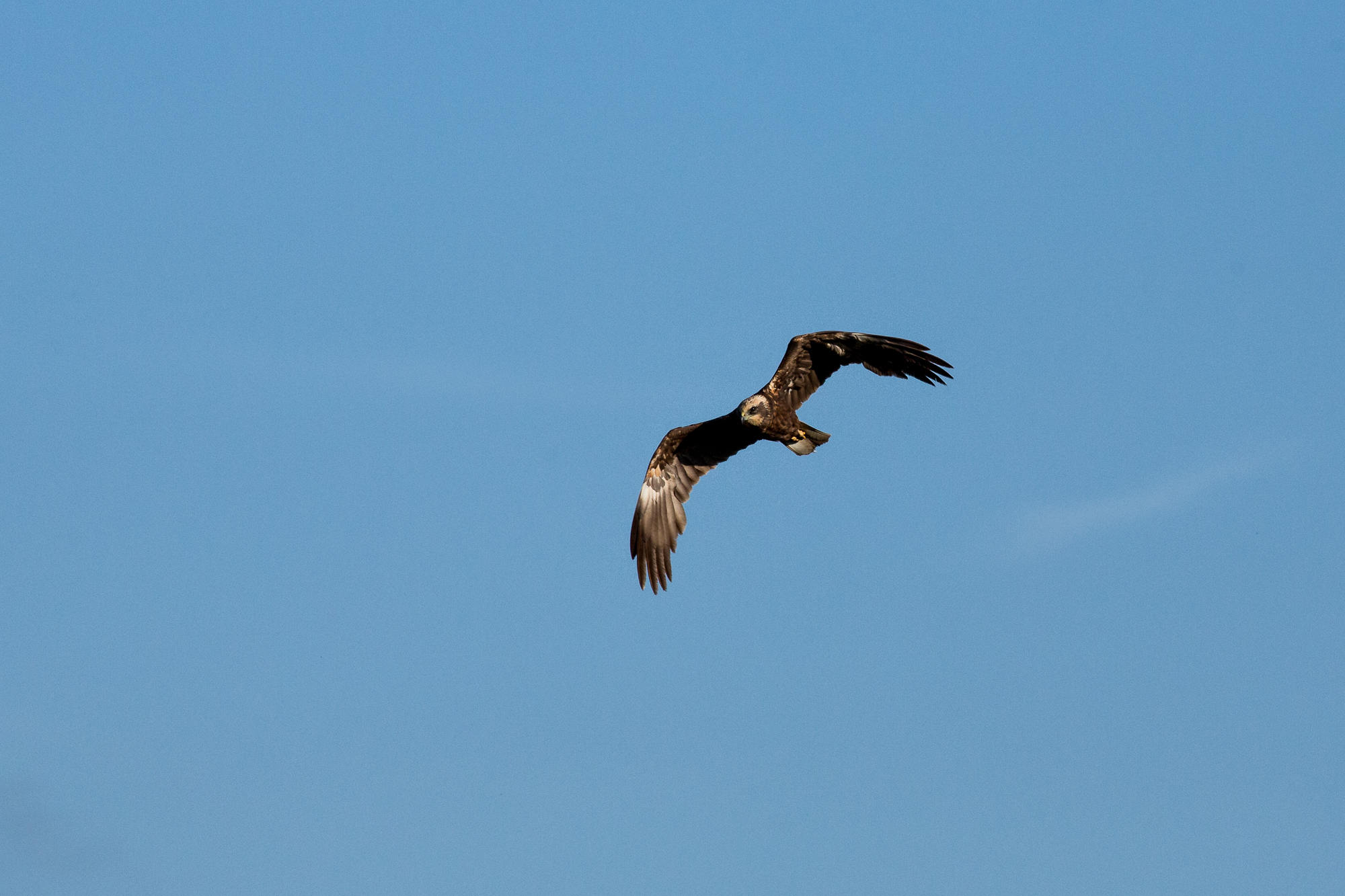

However, not all the birds leave this area in summer. For many of them it’s their migration end-point. They make nests and raise their hatchlings.
Storks, pelicans, ducks and even cranes (three couples have presumably nested in Javakheti this year) find shelter and food in Javakheti National Park and the adjacent area. A large colony of Armenian gulls (Larus armenicus) can be found on Madatapa lake. The peninsula, which becomes an island in the summer as a result of an increase in the lake’s water level, provides a habitat for more than 10,000 birds.


















